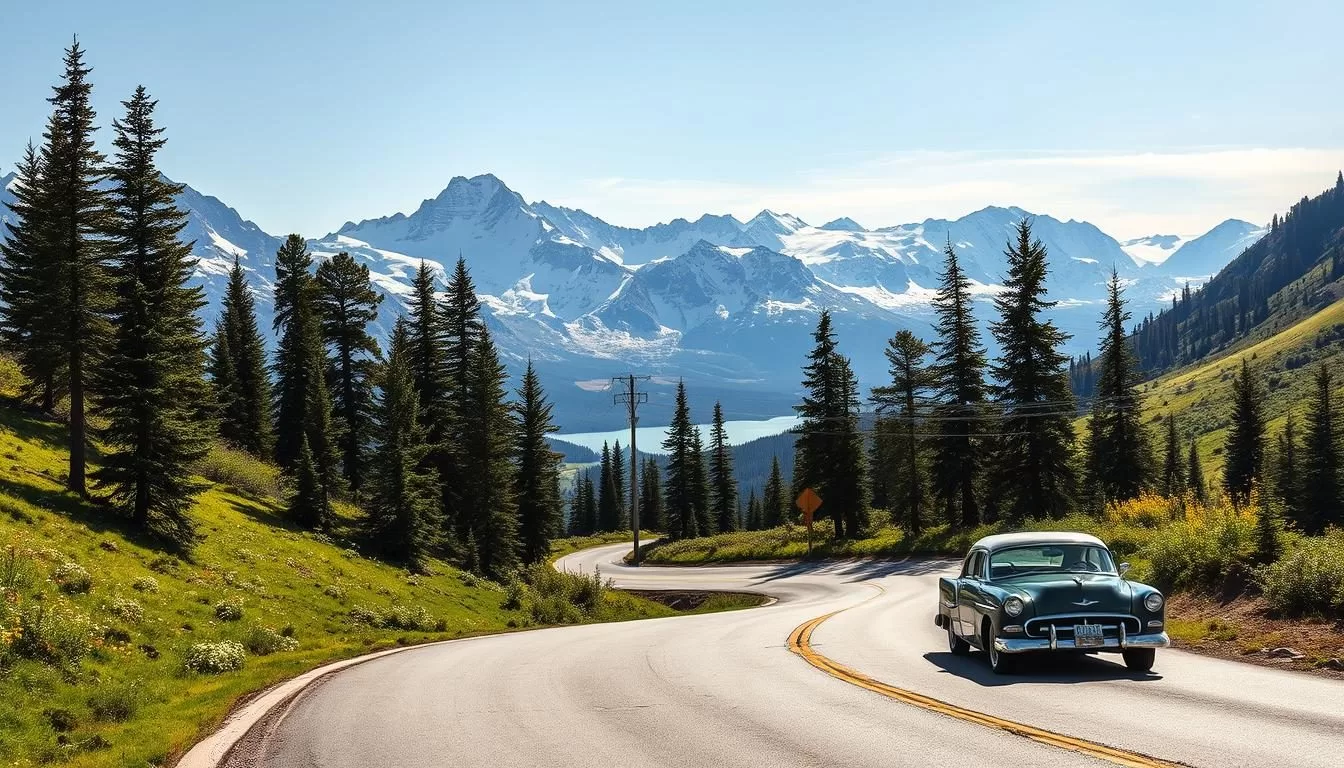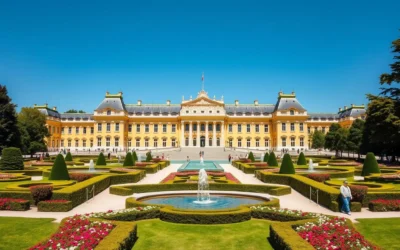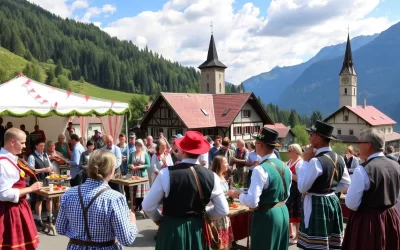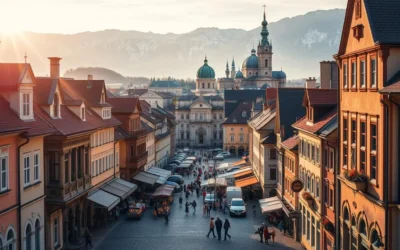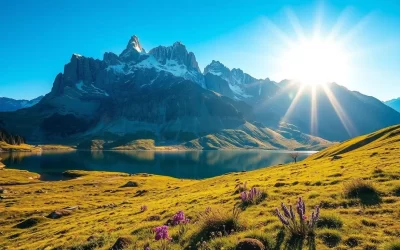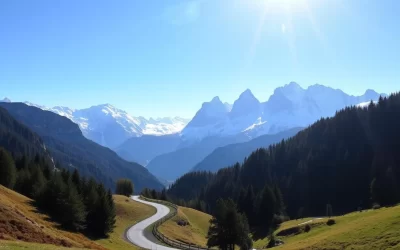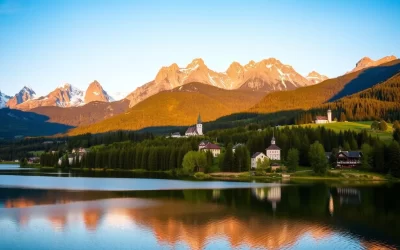✓ Accommodations✓ Flights✓ Rental Cars
Imagine embarking on an unforgettable alpine adventure through Austria’s most spectacular mountain landscapes. The Grossglockner High Alpine Road is a marvel of engineering that offers breathtaking views of the Austrian Alps, making it a must-visit destination for driving enthusiasts and nature lovers alike.
As you drive along this iconic road, you’ll be treated to stunning vistas of over 37 mountains, with the road climbing to an impressive 2,504 meters. The journey features 36 hairpin bends that will challenge and thrill you at every turn.
This comprehensive guide will walk you through everything you need to know about visiting the Grossglockner High Alpine Road, from practical information to the most stunning viewpoints, ensuring that you’re well-prepared for an unforgettable trip.
Discovering Austria’s Most Spectacular Alpine Road
Austria’s Grossglockner High Alpine Road offers an unforgettable road trip experience amidst breathtaking mountains. As you drive along this spectacular route, you’ll be treated to a visual feast of constantly changing scenery.
The journey takes you through the heart of the Alps on a way that has connected cultures and communities for centuries. You’ll witness dramatic elevation changes as you climb from around 750 meters to over 2,500 meters above sea level, experiencing diverse ecological zones along the high alpine route.
What Makes Grossglockner High Alpine Road Special
The Grossglockner High Alpine Road is special due to its unique blend of natural beauty and engineering marvel. It provides access to some of Austria’s most pristine natural environments.
A Journey Through the Heart of the Alps
As you travel along this road, you’ll pass through lush green valleys and snow-capped peaks, with picturesque landscapes that include pine trees, grazing cows, and verdant meadows filled with wildflowers. The ever-changing scenery creates a truly unforgettable experience.
The History Behind the Grossglockner High Alpine Road
The story behind the Grossglockner High Alpine Road is one of perseverance and vision, born out of the economic hardship faced by Austria after the First World War. As you explore this remarkable feat of engineering, you’ll uncover the challenges overcome during its construction and the impact it had on the region.
From Ancient Trade Route to Modern Marvel
The idea of building a road through the Grossglockner region wasn’t new even back then; ancient trade routes had existed, but the modern version was conceived to stimulate economic growth. After the Wall Street crash in 1929, investment was scarce, yet the project persisted, driven by the need for employment and infrastructure.
Construction and Engineering Achievements
The construction of the Grossglockner High Alpine Road was a monumental task that began in 1930 and was completed in just five years. It required moving over 870,000 cubic meters of earth and rock, primarily through manual labor and basic machinery. The engineers’ ability to design the road to blend with the natural landscape while ensuring safe passage through challenging terrain was a significant achievement.
Key Facts About the Grossglockner Road Construction:
- The road provided much-needed jobs during a period of economic depression.
- It was completed in an impressive five years, despite the challenging conditions.
- The construction involved significant manual labor and basic machinery.
- The road’s design aimed to minimize its impact on the natural beauty of the Alps.
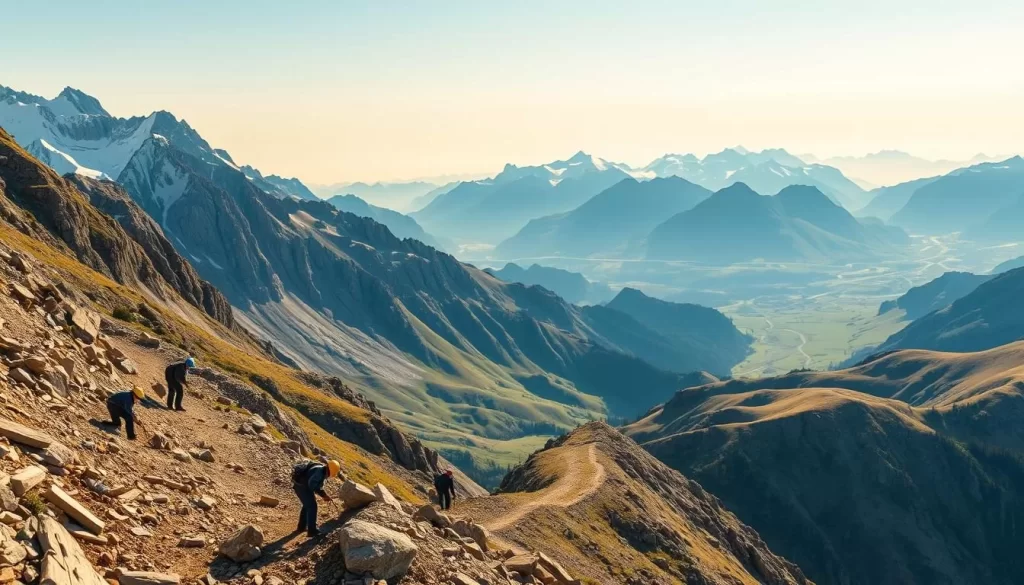
The Grossglockner High Alpine Road has become one of Austria’s most successful tourist attractions, proving the visionaries who supported its construction right. Today, as you drive along this road, you’re experiencing not just a scenic route, but a piece of history that has stood the test of time.
Planning Your Visit to Grossglockner High Alpine Road
Before you embark on your journey to Grossglockner High Alpine Road, it’s essential to plan your visit carefully. This ensures that you make the most of your trip and enjoy the scenic beauty without any hassles.
Best Time to Visit
The best time to visit Grossglockner High Alpine Road is during the summer months when the weather is mild and the road is clear of snow. This period offers the best conditions for driving and enjoying the breathtaking views.
Opening Hours and Seasons
The road is typically open from mid-May to early October, depending on weather conditions. It’s advisable to check the current status before you go.
Entrance Fees and Tickets
Grossglockner High Alpine Road is a toll road, with a fee of €36 per car (approximately $42 USD). Motorcyclists pay €26, while cyclists can pass through for free. Your toll payment serves as a day pass, granting access to visitor centers, exhibitions, parking areas, and viewpoints along the route.
- The toll fee includes access to various facilities along the route.
- Motorcyclists and cyclists have different fee structures.
- Consider visiting early to take advantage of potential discounts.
Getting to Grossglockner High Alpine Road
Your adventure to the Grossglockner High Alpine Road begins with selecting the best way to get there. The road is accessible via various transportation methods, catering to different preferences and fitness levels.
Starting Points: Fusch-Ferleiten and Heiligenblut
The Grossglockner High Alpine Road has two main starting points: Fusch-Ferleiten and Heiligenblut. Both offer unique experiences and are well-connected to nearby cities.
Transportation Options
You’ll find that a private car is the most popular and convenient way to experience the Grossglockner High Alpine Road, giving you complete freedom to stop at viewpoints. If you don’t have your own vehicle, rental cars are readily available in nearby cities like Salzburg, Zell am See, or Lienz.
- For the adventurous and physically fit, cycling the Grossglockner is a prestigious challenge, with the route being a favorite among serious cyclists.
- Motorcycle enthusiasts from across Europe make pilgrimages to this road, as its curves and views make it one of the continent’s most celebrated riding routes.
- If you prefer not to drive, limited guided bus tours operate during peak season from Salzburg and other nearby tourist centers.
People do cycle all the way up and back down, so it’s not uncommon to meet cyclists on the way. If you’re fit, you can cycle up too and take your own time, staying in one of the huts along the way.
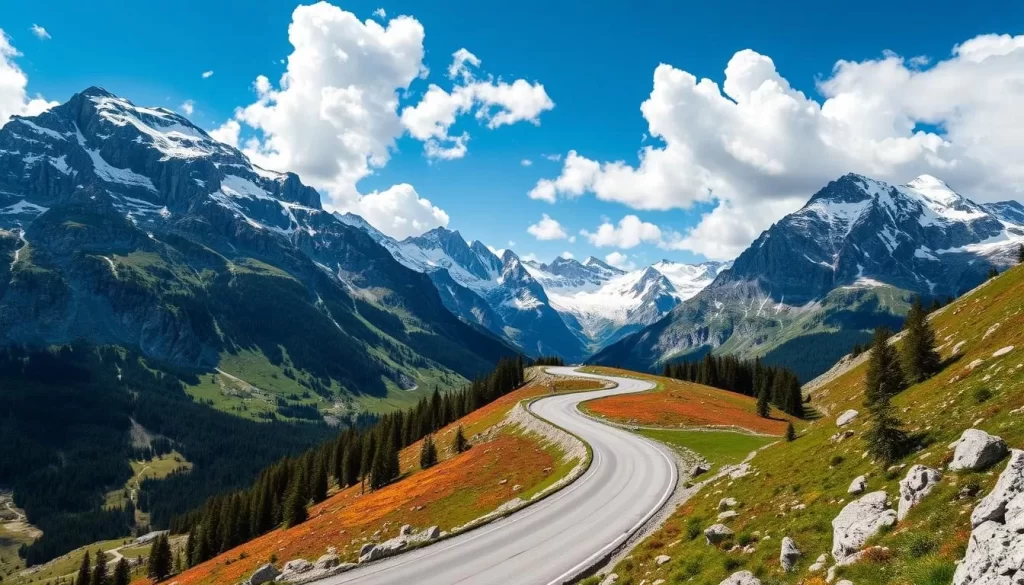
The Driving Experience: 36 Hairpin Bends and Breathtaking Views
The Grossglockner High Alpine Road is a driving adventure like no other, with its 36 hairpin bends and breathtaking views. As you drive through the Hohe Tauern National Park, the scenery unfolds with seemingly endless views over the range of 37 mountains as the road climbs to 2,504 meters.
Road Conditions and Driving Tips
The road is engineered for both thrill and safety, with well-designed curves and adequate width throughout. To make the most of your drive, consider the changing mountain weather conditions and be prepared for varying road conditions.
The Thrill of Mountain Driving
You’ll experience one of Europe’s most exhilarating drives as you navigate the 36 hairpin turns that climb to an altitude of 2,504 meters. The constantly changing perspectives create a cinematic experience, with each turn revealing new panoramas of Alpine splendor. Even if you’re not a driving enthusiast, the gradual ascent and well-placed rest areas make this a comfortable and enjoyable driving experience for most visitors.
Top Viewpoints Along Grossglockner High Alpine Road
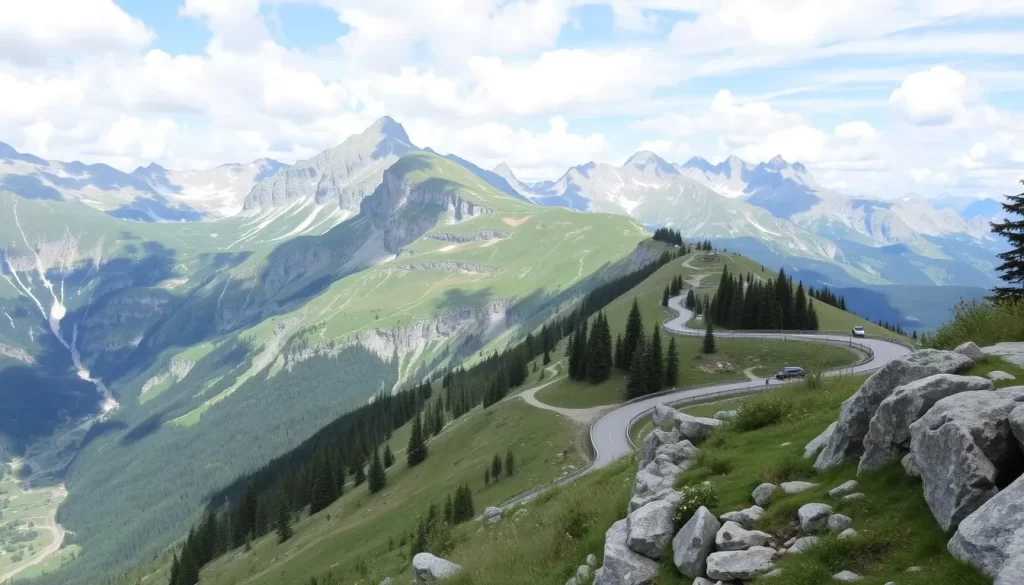
You’ll be spoiled for choice with the numerous viewpoints along the Grossglockner High Alpine Road, each offering a unique perspective on the Alps. The road is lined with strategic vantage points that are perfect for taking in the stunning vistas.
Fuscher Törl: The Perfect Photo Spot
Fuscher Törl is a photographer’s paradise, offering breathtaking views of the surrounding mountains. It’s an ideal spot to capture the beauty of the Alps.
Edelweiss-Spitze: The Highest Point
At Edelweiss-Spitze, you’ll reach the highest point of the Grossglockner High Alpine Road. Enjoy panoramic views of the Alps from this lofty vantage point.
Kaiser-Franz-Josefs-Höhe: Glacier Views
Kaiser-Franz-Josefs-Höhe is a must-visit viewpoint, offering stunning views of Austria’s highest mountain, the Grossglockner, and its largest glacier, the Pasterze. The modern visitor center features multiple viewing platforms, including the spectacular Swarovski observatory. You’ll find comprehensive exhibitions about alpine ecology and glaciology in the well-designed visitor center. The viewpoint is named after Emperor Franz Josef I, who visited this spot in 1856. With a free underground parking garage and elevators to the viewing platforms, Kaiser-Franz-Josefs-Höhe is an easily accessible and convenient stop.
Must-Visit Stops and Attractions
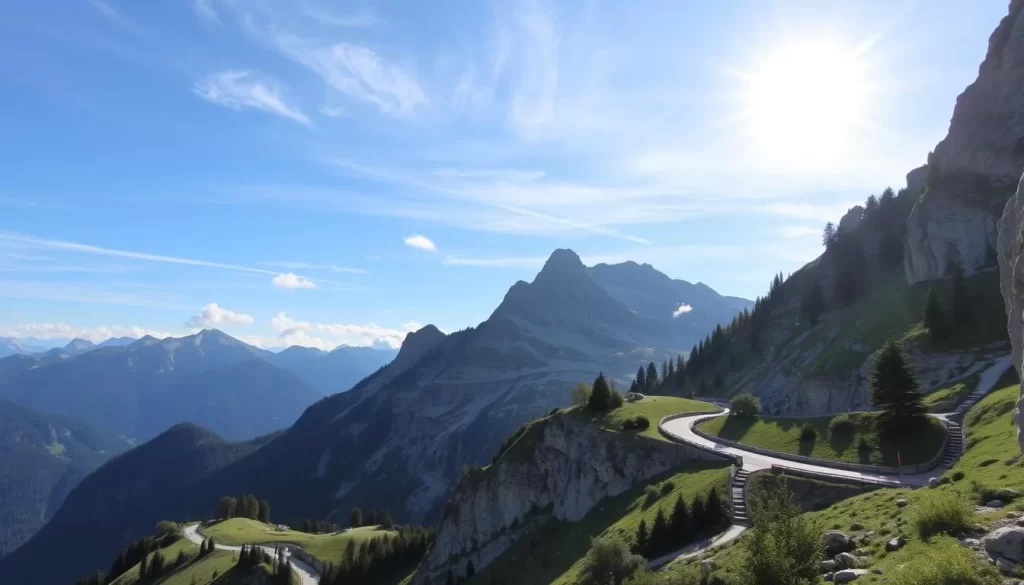
The Grossglockner High Alpine Road is dotted with fascinating stops that offer a mix of natural beauty and educational experiences. As you drive along this scenic route, you’ll have the opportunity to explore various attractions that showcase the region’s unique heritage.
Visitor Centers and Exhibitions
Visitor centers along the Grossglockner High Alpine Road provide valuable insights into the region’s history, geology, and wildlife. The exhibitions offer a wealth of information, making your journey even more enjoyable and informative.
Wildlife Viewing Areas
The Grossglockner High Alpine Road offers excellent opportunities to observe alpine wildlife in their natural habitat. You’ll have a chance to spot ibex with their impressive curved horns, marmots playing in their playground near the Wilhelm-Swarovski Observatory, and various bird species such as golden eagles and bearded vultures. The wildlife viewing areas are designated to help you make the most of your visit, and the information boards along the route will help you identify the species and understand their ecological roles.
- You’ll have excellent opportunities to observe alpine wildlife, particularly at designated viewing areas where animals are accustomed to human presence.
- The Marmot Playground near the Wilhelm-Swarovski Observatory is one of the best places to observe these charismatic alpine rodents in their natural habitat.
- You might spot ibex with their impressive curved horns on the rocky slopes above the treeline, especially in early morning or late afternoon.
- Bird enthusiasts should keep their eyes on the sky for golden eagles and bearded vultures (lammergeiers), which have been successfully reintroduced to the region.
- The wildlife information boards along the route help you identify species and understand their ecological roles in this protected alpine environment.
The Pasterze Glacier Experience
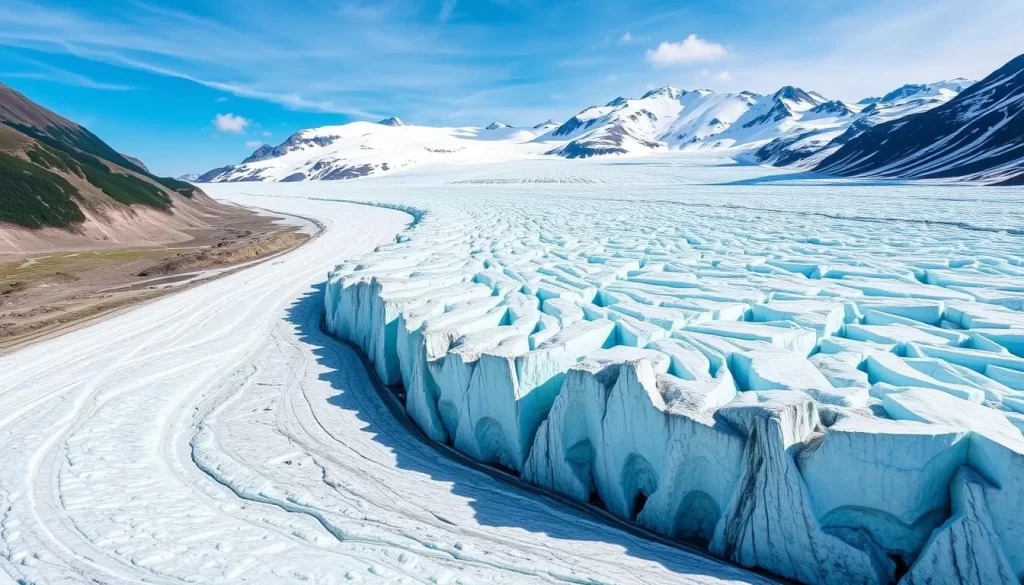
A visit to the Grossglockner High Alpine Road isn’t complete without experiencing the Pasterze Glacier. As you explore this natural wonder, you’ll gain insights into the effects of climate change on glaciers.
Hiking to the Glacier
You can hike to the Pasterze Glacier, observing its majestic beauty up close. The hiking trails offer a unique perspective on the glacier’s surroundings and the impact of environmental changes.
Understanding Glacier Retreat
The Pasterze Glacier has retreated more than 2 kilometers since the 19th century, providing a sobering example of climate change. Interactive exhibits at the visitor center use time-lapse photography to illustrate the glacier’s changes over time.
- You’ll gain a deeper understanding of climate change by observing the Pasterze Glacier.
- The interactive exhibits show the dramatic changes in the glacier’s size and shape.
- You’ll learn how scientists monitor the glacier’s health and what these changes indicate about our changing climate.
Hiking Opportunities in Hohe Tauern National Park
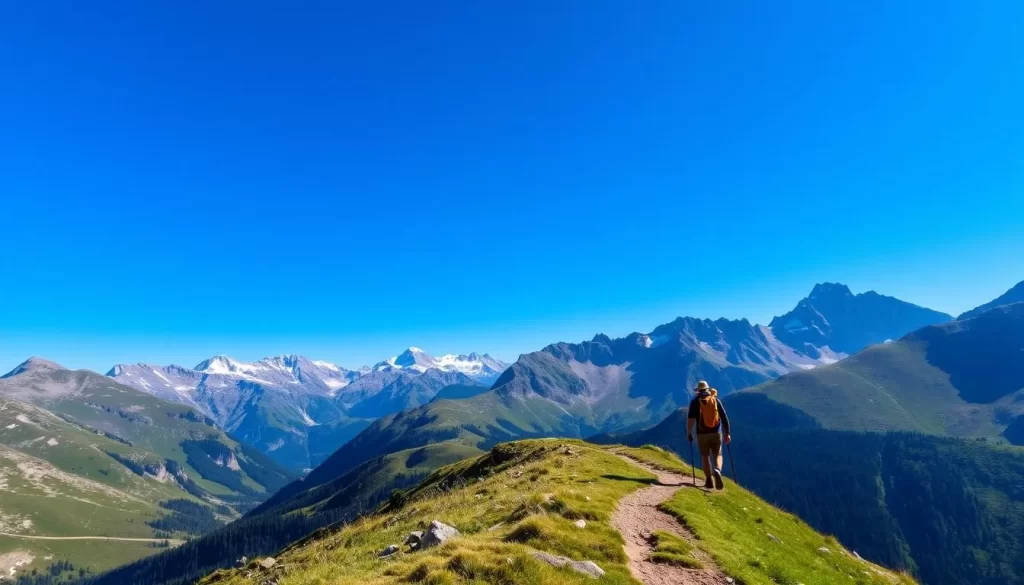
With its stunning mountain landscapes, Hohe Tauern National Park is a hiker’s paradise, featuring trails for all abilities. You can explore the park’s diverse hiking opportunities, from easy strolls to more challenging climbs.
Family-Friendly Trails
The Gamsgrubenweg, a 2-hour hike, is an excellent choice for families. This trail takes you through tunnels carved into the mountainside, offering unique perspectives of the Pasterze Glacier. You can hike along this trail and enjoy the breathtaking views.
Challenging Alpine Hikes
For more experienced hikers, the 4-hour round-trip hike from Glocknerhaus to Kaiser-Franz-Josefs-Höhe is a must. You’ll be rewarded with spectacular views of the Margaritzenstausee reservoir and Lake Sandersee. The trail is well-marked, and you can plan your hike according to the hours available to you.
Wildlife Encounters Along the Grossglockner Road
Among the majestic peaks and valleys of the Grossglockner region, a variety of wildlife awaits discovery. The protected status of the Hohe Tauern National Park has created a haven for numerous species to thrive.
Friendly Alpine Residents
The Grossglockner High Alpine Road is home to friendly alpine marmots. These creatures are a delight to watch, especially when they’re feeding or playing in the meadows.
Diverse Alpine Wildlife
The area is also inhabited by majestic Alpine ibex, golden eagles, and bearded vultures. Keep your eyes on the rocky slopes and the sky to spot these incredible creatures.
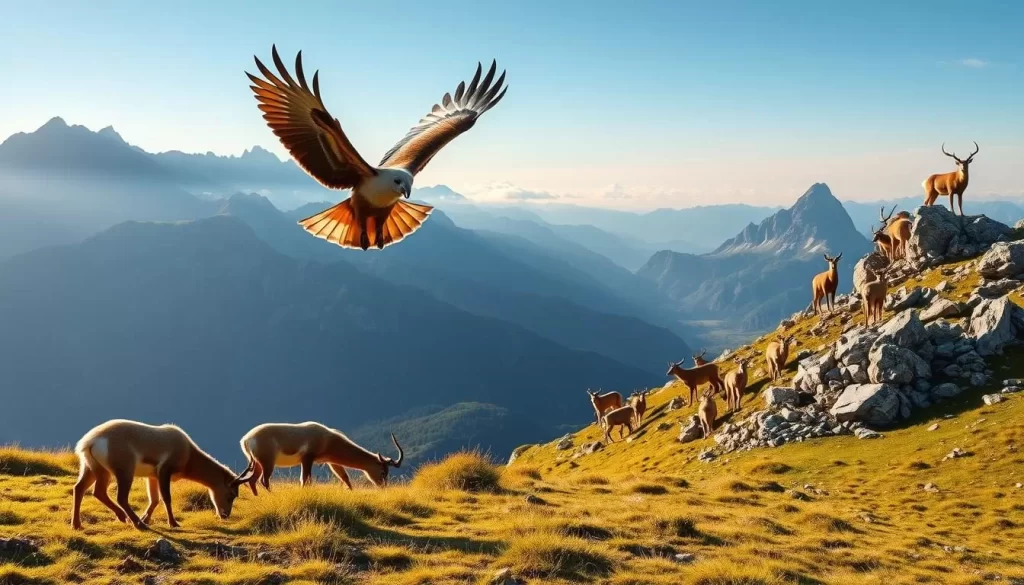
| Wildlife | Description | Best Time to Spot |
|---|---|---|
| Alpine Ibex | Majestic creatures with curved horns | Early morning |
| Marmots | Friendly, social creatures often seen feeding | Throughout the day |
| Golden Eagles | Large birds of prey with impressive wingspans | Soaring on thermal currents |
To enhance your wildlife viewing experience, consider bringing binoculars to observe animals without disturbing their natural behaviors. The nature reserve status of the area ensures that both the wildlife and the mountains remain pristine.
Photography Tips for Capturing the Alpine Beauty
The Alpine landscape unfolding before your eyes is a treasure trove of photographic opportunities. As you drive along the Grossglockner High Alpine Road, you’ll encounter diverse scenery that demands to be captured.
Best Times of Day for Photography
The best times for photography are early morning and late afternoon when the light is soft and golden. These times help reduce harsh shadows and enhance the colors of the mountains and the road.
Must-Capture Scenes and Perspectives
Some of the must-capture scenes include:
- The serpentine view of the road winding through the mountains, best photographed from elevated viewpoints like Edelweiss-Spitze.
- The contrast between snow-capped peaks and vibrant green alpine meadows, especially during late spring and early summer.
- Close-up details such as alpine flowers, textured rock formations, and crystal-clear mountain streams.
- Including a human element in your shots to provide scale and context to the massive mountain landscape.
- The reflections of mountains in small alpine lakes and the dramatic clouds that often form around the peaks.
By focusing on these elements, you’ll be able to capture the essence of the Grossglockner High Alpine Road and its breathtaking surroundings.
Where to Eat Along the Grossglockner High Alpine Road
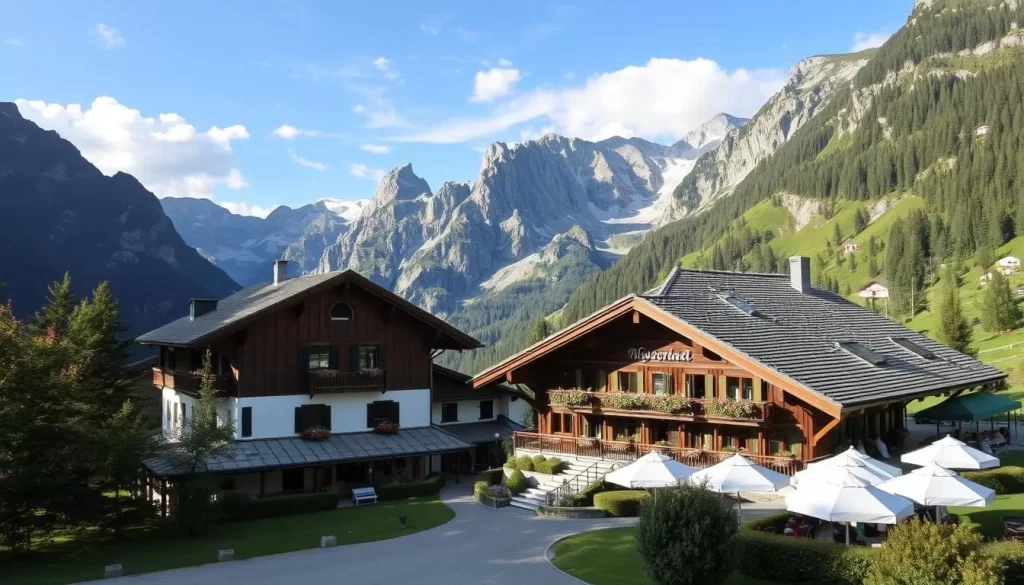
The Grossglockner High Alpine Road is not just a scenic drive; it’s also a culinary journey through Austria’s mountainous regions. As you explore the area, you’ll come across various mountain restaurants and cafes serving local specialties.
Mountain Restaurants and Cafés
The mountain restaurants along the Grossglockner High Alpine Road offer a range of dining experiences. You can enjoy a hearty meal at a traditional Austrian restaurant or grab a quick snack at a café. Many of these establishments serve local cheeses from alpine dairies, often accompanied by speck (smoked ham) and fresh bread.
Local Alpine Specialties to Try
When dining along the Grossglockner High Alpine Road, be sure to try some of the local Alpine specialties. You should sample Kaiserschmarrn, a fluffy shredded pancake with powdered sugar and fruit compote, named after Emperor Franz Josef. Other dishes to try include Tiroler Gröstl, a pan-fried mix of potatoes, onions, and meat topped with a fried egg, and traditional clear beef soup with liver dumplings or pancake strips.
Accommodation Options Near Grossglockner
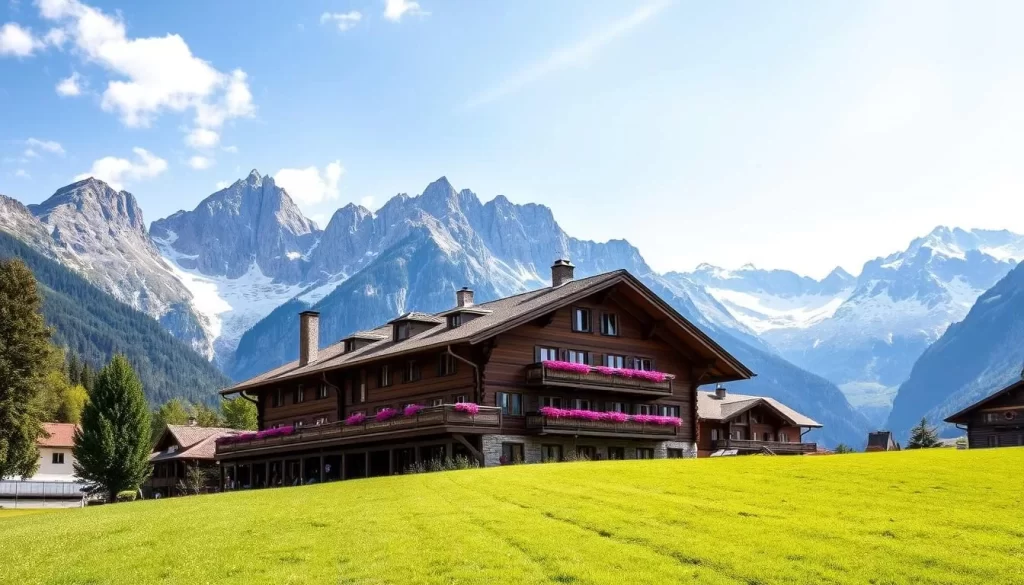
To fully experience the beauty of Grossglockner, consider staying in one of the nearby villages. The area offers a range of accommodations that cater to different needs and preferences.
The villages surrounding Grossglockner High Alpine Road provide a serene and picturesque setting for your stay. You can choose from a variety of accommodations, ranging from family-run guesthouses to modern hotels with spectacular views.
Staying in Fusch or Bruck
Fusch and Bruck are charming villages that offer a family-friendly atmosphere, making them ideal for travelers. You can find accommodations that suit your needs, from cozy guesthouses to hotels with excellent amenities.
Heiligenblut Accommodation
Heiligenblut is a picturesque village at the southern end of the Grossglockner Road, famous for its Gothic church with a needle-like spire set against the mountain backdrop. The village offers accommodation ranging from traditional family-run guesthouses to modern alpine hotels, many with spectacular views of the Grossglockner. You can choose from several wellness-focused properties that offer spa facilities—perfect for relaxing after a day of mountain exploration. Staying in Heiligenblut gives you easy access to additional attractions, including the impressive Heiligenblut waterfall and numerous hiking trails in the surrounding area.
Combining Grossglockner with Other Austrian Attractions
As you plan your Austrian adventure, consider combining the Grossglockner High Alpine Road with other regional attractions for a more comprehensive experience. You can create a memorable trip by exploring the surrounding areas.
Day Trips from Salzburg
For those based in Salzburg, a day trip to the Grossglockner High Alpine Road is feasible, although it requires some planning. You can also visit other nearby attractions like Hallstatt and the Salzkammergut lake district, making for a varied day.
Extended Alpine Itineraries
If you’re planning a longer route, consider an epic Alpine pass tour that includes famous roads in Austria, Switzerland, and Italy. You can also explore the Dolomites, Julian Alps, and even extend your journey to Croatia’s Plitvice Lakes for a more extensive Central European adventure.
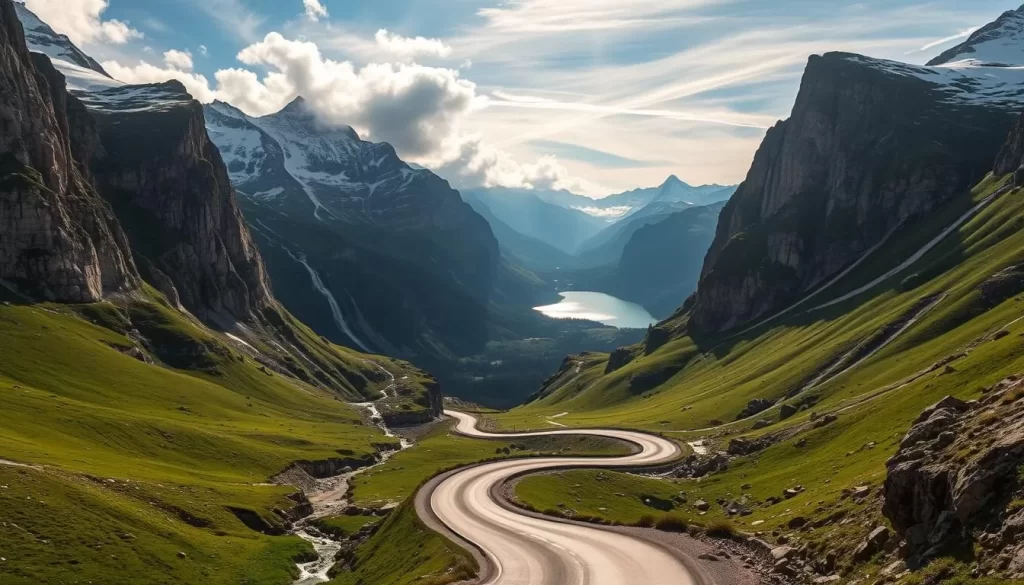
Seasonal Highlights on Grossglockner High Alpine Road
The Grossglockner High Alpine Road offers distinct experiences throughout the year, with each season bringing its unique charm. As you plan your visit, considering the time of year can significantly enhance your alpine adventure.
Summer Wildflowers and Green Meadows
Late spring and summer are considered the best time to drive the Grossglockner High Alpine Pass. During this period, the alpine meadows are adorned with vibrant wildflowers, creating a picturesque landscape. The lush green surroundings not only add to the beauty but also provide a serene atmosphere.
Early Fall Colors and Clear Views
As summer transitions to fall, the Grossglockner High Alpine Road offers breathtaking views. September and early October are particularly noteworthy, with clear, crisp air and the changing colors of alpine vegetation creating a spectacular palette of reds, oranges, and golds. The reduced crowds during this shoulder season allow for a more peaceful experience, making it an ideal time for those seeking tranquility amidst nature’s splendor.
Conclusion: Why Grossglockner High Alpine Road Should Be on Your Austria Itinerary
The Grossglockner High Alpine Road is more than just a drive; it’s an unforgettable experience. You’ve discovered why this road deserves a place on every Austria itinerary, offering unparalleled access to high alpine environments. Whether you’re a driving enthusiast, nature lover, or family seeking adventure, the road’s natural beauty, cultural heritage, and facilities make it accessible and enjoyable for all. With its 36 hairpin turns and breathtaking views, the value of this once-in-a-lifetime trip is immeasurable.
The above is subject to change.
Check back often to TRAVEL.COM for the latest travel tips and deals.
